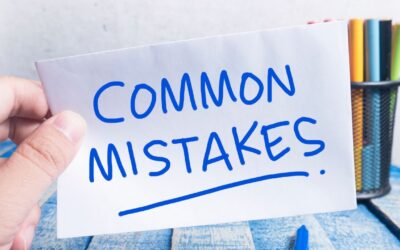Introduction
Mastering the use of articles in English can be a challenging task, especially for non-native speakers. Articles are small but essential words that help to clarify the meaning of a sentence. They are used to indicate whether a noun is specific or general, and they provide context to the conversation. In English, there are three main articles: ‘a,’ ‘an,’ and ‘the.’ In this article, we will discuss the proper usage of these articles, common mistakes, and some tips to improve your English grammar skills.
Defining Articles: A, An, The
1. ‘A’ and ‘An’
‘A’ and ‘an’ are indefinite articles used with singular countable nouns when the speaker is referring to something general or not specifically identified. The main difference between ‘a’ and ‘an’ is based on the sound of the word that follows.
- Use ‘a’ before a word that starts with a consonant sound. Example: a cat, a dog, a table
- Use ‘an’ before a word that starts with a vowel sound. Example: an apple, an egg, an umbrella
Note that the rule is based on the sound, not the actual letter. Some words start with a vowel but have a consonant sound, and vice versa. For example:
- Use ‘an’ before a word that starts with a silent ‘h.’ Example: an hour, an honest person
- Use ‘a’ before a word that starts with a vowel but has a consonant sound. Example: a university, a European country
2. ‘The’
‘The’ is a definite article used with both singular and plural nouns when the speaker is referring to something specific or already known to the listener. It can be used with countable and uncountable nouns.
Examples:
- The book on the table is mine.
- The children are playing in the park.
- The information you provided was helpful.
Rules for Using Articles
1. Use ‘a’ or ‘an’ for general statements and first-time introductions.
When talking about something for the first time, or when making a general statement about a class or group, use ‘a’ or ‘an.’
Examples:
- I saw a movie yesterday. (general statement)
- A dog needs regular exercise. (general statement about dogs)
2. Use ‘the’ for specific items or when the listener knows what you’re referring to.
When referring to something that has already been mentioned or is known to the listener, use ‘the.’
Examples:
- The movie I saw yesterday was great. (specific movie mentioned earlier)
- The dog in our neighborhood is friendly. (specific dog known to the listener)
3. Omit articles with plural countable nouns and uncountable nouns when speaking generally.
When speaking about plural countable nouns or uncountable nouns in general, do not use articles.
Examples:
- Dogs make great pets. (plural countable noun)
- Happiness is essential for a fulfilling life. (uncountable noun)
However, when referring to a specific group of countable nouns or a specific quantity of an uncountable noun, use ‘the.’
Examples:
- The dogs in the park are well-behaved. (specific group of dogs)
- The happiness she brings to our lives is immeasurable. (specific instance of happiness)
Common Mistakes and How to Avoid Them
1. Using ‘a’ or ‘an’ with plural countable nouns.
Incorrect: I have a cats. Correct: I have cats.
2. Using ‘the’ with general statements.
Incorrect: The love is a powerful emotion. Correct: Love is a powerful emotion.
3. Omitting articles when needed for specificity.
Incorrect: I borrowed book from the library. Correct: I borrowed the book from the library.
4. Using the wrong article based on the sound of the following word.
Incorrect: I saw a European film last night. Correct: I saw a European film last night.
5. Using articles with proper nouns, languages, or subjects.
Incorrect: The Paris is a beautiful city. Correct: Paris is a beautiful city.
Incorrect: She is studying the French. Correct: She is studying French.
Tips for Mastering the Use of Articles
1. Read and listen to English content.
Expose yourself to English books, articles, and audio materials, such as podcasts and videos. Pay attention to how articles are used in different contexts.
2. Practice speaking and writing.
Apply what you’ve learned in your everyday conversations and writing. The more you practice, the more natural it will become.
3. Learn the exceptions.
As with any language, English has its exceptions to the rules. Familiarize yourself with these exceptions to enhance your understanding of article usage.
4. Seek feedback.
Ask native English speakers or experienced learners to provide feedback on your use of articles. Constructive criticism can help you identify areas for improvement.
Conclusion
Understanding and using articles correctly is an essential skill for mastering English grammar. By learning the rules and practicing them consistently, you’ll improve your ability to communicate effectively in English. While it may seem challenging at first, with time and dedication, you’ll become more comfortable and confident in your use of articles. Remember that even native speakers occasionally make mistakes, so don’t be too hard on yourself as you learn. The key is to be patient, persistent, and open to feedback. As you continue to practice and expose yourself to English content, your understanding of articles and their proper usage will grow, leading to clearer and more accurate communication.
Keywords:
- Articles: Small but essential words that help to clarify the meaning of a sentence by indicating whether a noun is specific or general and providing context to the conversation.
- Indefinite articles: Articles used with singular countable nouns when referring to something general or not specifically identified, such as ‘a’ and ‘an’.
- Definite article: An article used with both singular and plural nouns when referring to something specific or already known to the listener, such as ‘the’.
- Consonant sound: A speech sound that is produced by obstructing or partially obstructing the airflow, such as /b/, /d/, /f/, /k/, /t/.
- Vowel sound: A speech sound that is produced without any significant obstruction or restriction in the vocal tract, such as /a/, /e/, /i/, /o/, /u/.
- Silent ‘h’: A letter ‘h’ in a word that is not pronounced, such as in ‘hour’ or ‘honest’.
- Countable noun: A noun that can be counted, such as ‘cat’, ‘dog’, ‘table’.
- Uncountable noun: A noun that cannot be counted, such as ‘happiness’, ‘water’, ‘money’.
- Plural countable nouns: More than one countable noun, such as ‘cats’, ‘dogs’, ‘tables’.
- Specificity: The quality of being specific, precise, or definite in meaning.
- General statements: Statements made about a class or group that do not refer to specific items, individuals, or instances.
- First-time introductions: Introducing something for the first time, using ‘a’ or ‘an’.
- Omit: To leave out or exclude something.
- Native speakers: People who grew up speaking a language as their first language.
- Audio materials: Materials that provide audio content, such as podcasts and audio books.
- Constructive criticism: Feedback that provides suggestions for improvement in a positive and helpful manner.
- Exceptions: Cases that do not follow the general rules or patterns.
- Dedication: The quality of being committed to a task or purpose, and putting in time and effort to achieve it.
- Communication: The act of conveying information or exchanging ideas between individuals or groups.
- Confidence: The feeling or belief that one can rely on one’s abilities, qualities, or judgment.










0 Comments